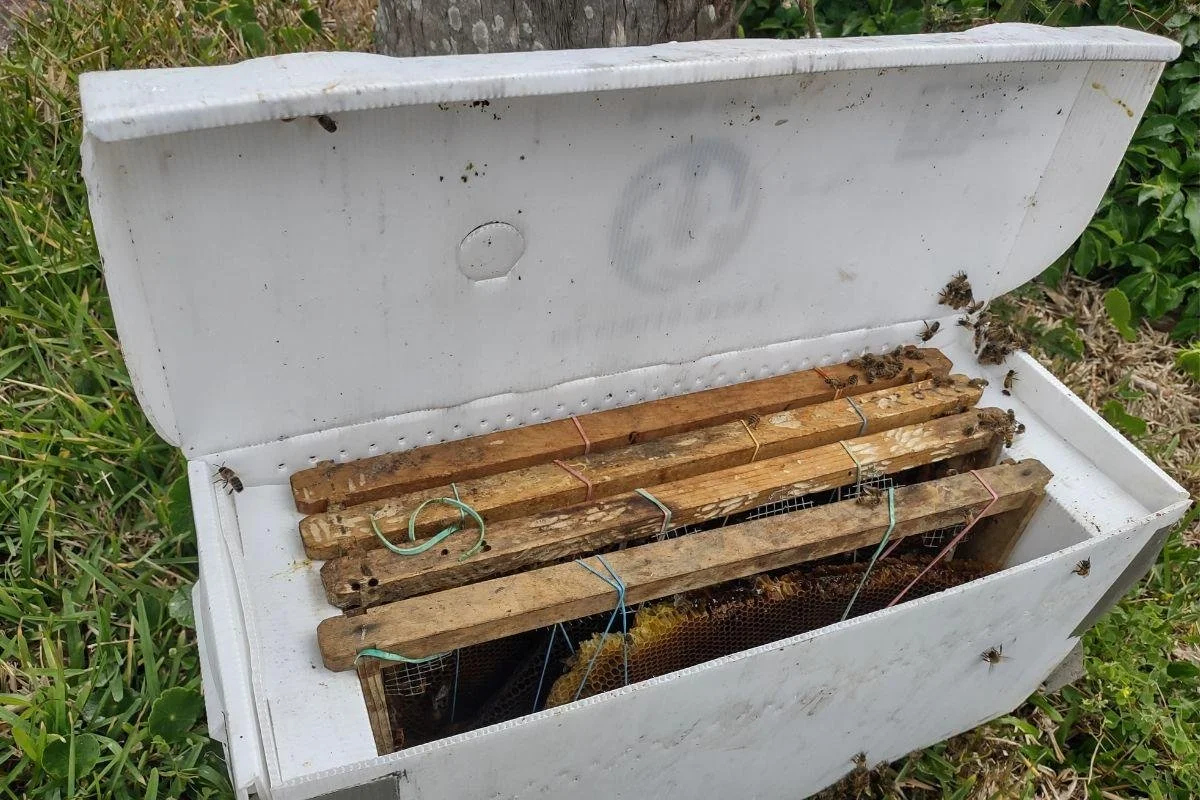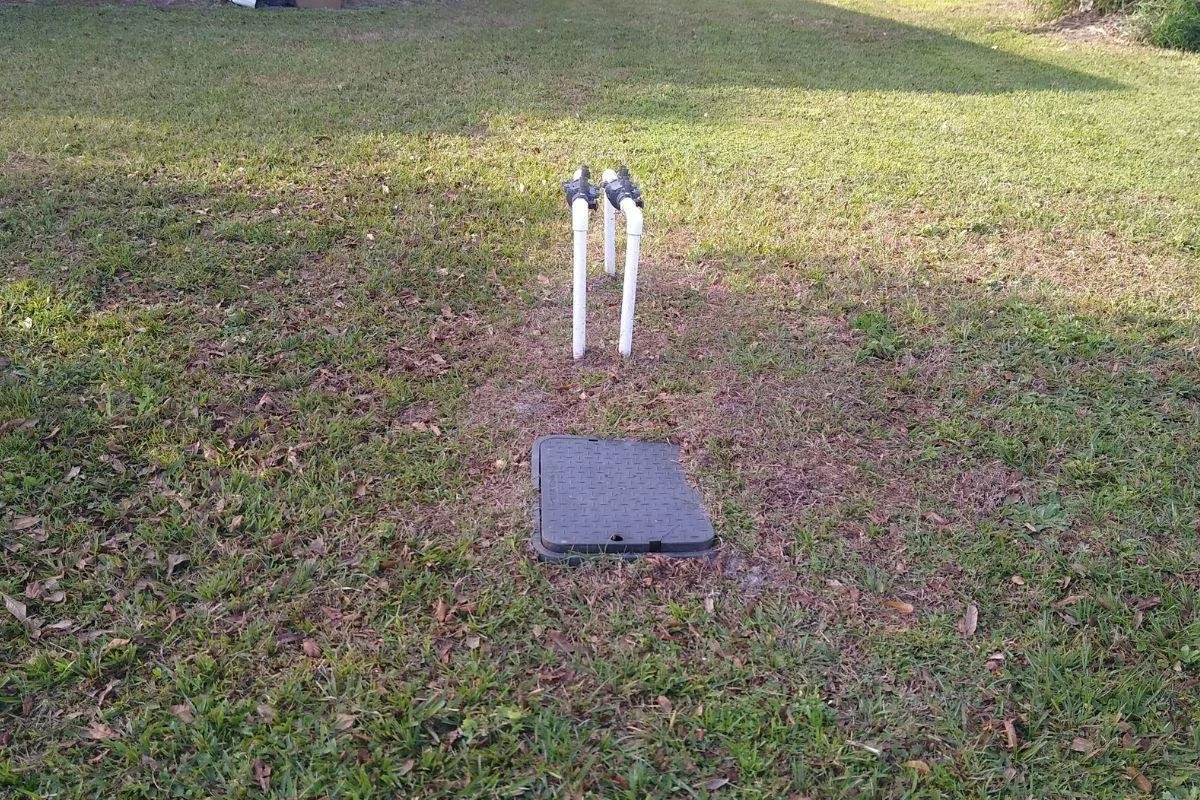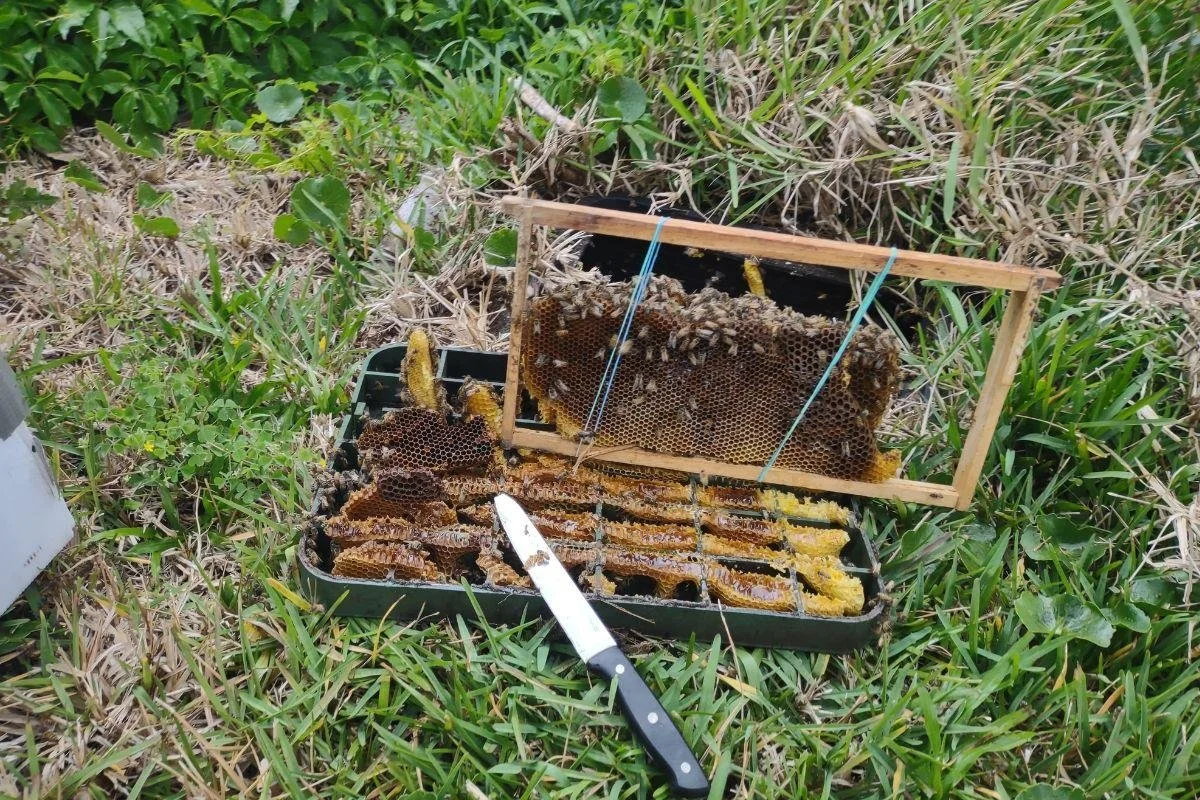🐝 Do Honey Bees Nest in the Ground? Here's What You Need to Know.
If you’ve ever seen flying insects going in and out of the soil or from the base of a plant, you might think honeybees are building a nest underground. But the truth is, honeybees rarely live in the dirt. What you're seeing is very likely yellow jackets—a different and more aggressive insect that often gets mistaken for bees.
In this post, we’ll explain
Safe Bee Hive Relocation
Why don’t honeybees build nests in the ground
Which insects live underground
Why water meter boxes are an exception
How to identify what’s really in your yard
And how to safely remove and relocate bee colonies
Let’s break it down.
🐝 Why Honey Bees Don’t Nest in Dirt
Honey bees are picky about where they build their homes. Their hives need to be clean, enclosed, and protected from the environment. They store honey, raise baby bees, and live as a colony in a highly organized space.
Dirt is far from ideal for them.
One big reason is contamination. Honey is sensitive to bacteria, and if it’s stored in contact with soil, it can spoil or become unsafe for the bees. Also, ground moisture can damage the hive structure and lead to the collapse of combs.
Instead of the ground, honey bees prefer places like:
Tree hollows
Roof soffits
Inside walls
Attics
Beekeeping boxes
These enclosed spaces offer safety from predators, consistent temperatures, and a place to hang their honeycomb vertically, which is how bees naturally build.
⚠️ What You’re Probably Seeing: Yellow Jackets
When people see insects coming out of the ground, they often assume they’re bees. But yellow jacket, a type of ground-dwelling wasp, is much more likely to build nests below the soil.
Yellow jackets are aggressive, fast-moving, and have a shiny black and yellow body. Unlike honey bees, they can sting multiple times and are more likely to defend their nests if disturbed. Their underground nests are usually hidden in:
Abandoned rodent holes
Mulched flower beds
Loose dirt or compost piles
If disturbed, yellow jackets will swarm and sting. Many people unknowingly provoke them while mowing the lawn or gardening, which can lead to dangerous stings, especially for children and pets.
🚰 The Exception: Water Meter Boxes
Underground utility box after bee removal
While bees don’t like dirt, there’s one underground location where honey bees may thrive—water meter boxes.
These utility boxes are usually made of plastic or metal and sit flush with the ground. The environment inside is dry, stable, and protected from outside bacteria. Bees love the smooth surface of the lid and the enclosed, dark space underneath.
Inside, bees can build full colonies with comb, brood, and stored honey. These hives often go unnoticed for weeks or even months, until a homeowner spots bees flying in and out of the box.
If this is happening on your property, it’s best to call a professional bee removal expert immediately. Do not open the lid or spray inside the box.
🔍 How to Identify What’s in the Ground
You don’t need to be an expert to spot the difference between honey bees and yellow jackets—just look closely at their behavior and where they’re nesting.
Honey bees are fuzzy, golden-brown in color, and usually calm. They may seem curious but aren’t aggressive unless threatened. They prefer to build above ground or in enclosed man-made spaces like water boxes.
Yellow jackets, on the other hand, are smooth-bodied and bright yellow with black stripes. They fly quickly, hover aggressively, and will sting if you get too close. If you see them coming from a small hole in the ground, especially in a lawn or garden bed, it’s almost certainly a yellow jacket nest.
Still unsure? Don’t take chances. Call a licensed professional who can inspect and identify the species safely.
🚫 Don’t Spray! Here's Why That’s a Mistake
Many homeowners panic and try to spray insecticide into the ground or around the entrance of a suspected nest. This might seem like a quick fix, but it can lead to serious problems.
First, if the insects are honey bees, you could be killing an essential pollinator species. Bees are already struggling due to habitat loss, pesticides, and disease. Every colony saved helps protect food crops and biodiversity.
Second, spraying yellow jackets usually makes them more aggressive. Instead of eliminating the problem, you may provoke a dangerous swarm.
Third, spraying doesn’t remove the actual nest. The comb, larvae, and honey remain, which can attract new pests or create bad odors over time. For water meter boxes, spraying could also damage utility components.
The best solution is professional live bee removal—safe, humane, and eco-friendly.
🛠️ How Live Bee Removal Works (Even Underground)
At Eco Bee Removal, we specialize in relocating live bee colonies—even when they’re hidden in hard-to-reach or underground spaces like meter boxes.
Honeycomb collected during live bee removal
Here’s how our process works:
Free Inspection – We identify the insect and assess the situation.
Safe Access – We carefully open the box or area without harming the bees.
Bee Collection – Using a gentle vacuum, we collect the bees into a transport hive.
Hive Removal – We cut out the comb, honey, and queen cells to transfer to a bee box.
Relocation – We safely move the colony to a managed apiary or natural environment.
Sealing Entry Points – We clean and close any gaps to prevent re-entry.
Our goal is to save bees while protecting people and property. We never use poison, and we ensure the hive is responsibly rehomed.
🌱 Why Bee Relocation Matters
Honey bees are vital to our ecosystem. Without them, many fruits, vegetables, and flowering plants would disappear. Removing and relocating a hive, instead of killing it, supports pollinator health and environmental balance.
Even if bees nest in strange places like a water meter box, they deserve a second chance, just in a safer location.
✅ Final Thoughts: If You See Bees in the Ground, Don’t Assume
To summarize:
Honey bees do not nest in dirt, except in rare cases like water meter boxes.
Yellow jackets almost always live underground and are often mistaken for bees.
Spraying is dangerous and ineffective for both bees and wasps.
Professional live bee removal is the safest, most eco-friendly solution.
If you’re unsure what insect you’re dealing with, it’s always best to get expert help.
📞 Call Eco Bee Removal Today
Think you’ve spotted a bee nest in the ground or water meter box? Don’t take risks. Contact Eco Bee Removal for a free inspection. We’ll identify the species, explain your options, and relocate any honey bees with care and professionalism.



